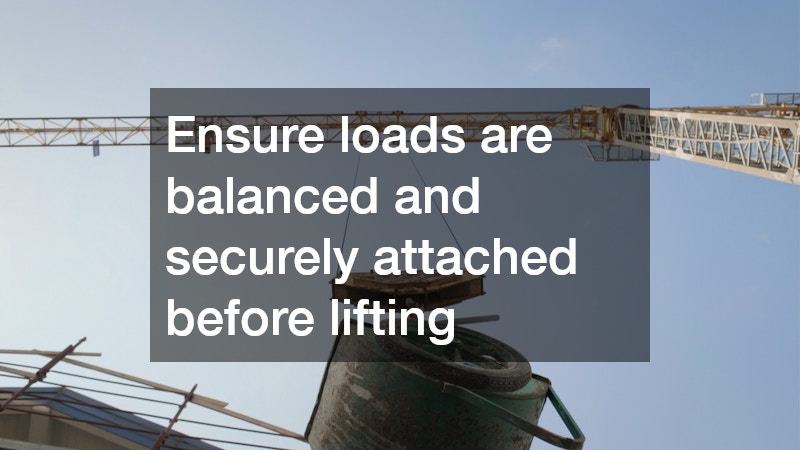Key Takeaways:
-
Tip-overs, falling loads, and mechanical failures are leading crane hazards.
-
Electrocution and collisions are major causes of crane-related injuries.
-
Human error and lack of training significantly increase accident risks.
-
Site inspections, load chart adherence, and preventive maintenance are critical.
-
Partnering with a certified heavy-lifting crane company for construction work ensures safety, proper training, and regulatory compliance.
-
Emergency response plans and clear communication reduce the impact of accidents.
-
Environmental and site conditions must be assessed before any lift.

Heavy-lifting cranes are essential equipment for construction projects, enabling the safe and efficient movement of large materials, machinery, and structural components. However, operating cranes comes with significant risks. According to OSHA, crane-related incidents account for a notable portion of construction site injuries and fatalities in the United States. Understanding common crane accidents and implementing preventive measures is critical for safety.
For construction companies and site managers, partnering with a reliable heavy-lifting crane company for construction work is one of the most effective ways to minimize risks. This article explores the most frequent crane accidents, their causes, and strategies to prevent them, ensuring safer and more productive construction sites.
Types of Crane Accidents on Construction Sites
Crane accidents can occur in several ways, depending on the type of crane, the load being lifted, and site conditions. Common types include:
-
Crane Tip-Overs: A crane toppling over due to overloading, uneven ground, or operator error.
-
Falling Loads: Materials or equipment falling from the crane, posing risks to workers below.
-
Mechanical Failures: Malfunctions in the crane’s boom, hoist, or hydraulic system.
-
Electrocution: Contact with overhead power lines.
-
Collisions: Cranes hitting structures, vehicles, or other equipment.
Each of these accidents can result in serious injuries, property damage, or project delays. Understanding the causes and implementing preventive strategies is vital.
1. Crane Tip-Overs
Tip-overs are among the most dangerous crane accidents on construction sites. They usually occur when the crane’s center of gravity shifts unexpectedly or when lifting operations exceed the crane’s capacity.
Common Causes of Tip-Overs:
-
Overloading the crane beyond its rated capacity.
-
Improper setup on uneven or unstable ground.
-
High wind conditions causing imbalance during lifts.
-
Incorrect use of outriggers or failure to fully extend them.
Preventive Measures:
-
Always follow the load charts provided by the crane manufacturer.
-
Conduct a site survey to ensure stable ground conditions before setup.
-
Monitor weather conditions, postponing lifts in high winds.
-
Use outriggers and counterweights correctly, and regularly inspect their condition.
Engaging a certified heavy-lifting crane company for construction work ensures experienced operators handle setup and lifting, reducing the likelihood of tip-over incidents.
2. Falling Loads

Falling loads are another frequent hazard on construction sites. Materials or equipment that are not properly secured can drop unexpectedly, causing injuries, fatalities, and equipment damage.
Common Causes of Falling Loads:
-
Improper rigging or unsecured materials.
-
Mechanical failure of the hoist or lifting hook.
-
Sudden crane movement or operator error.
-
Overloading the crane beyond safe limits.
Prevention Strategies:
-
Train riggers to use proper lifting techniques, slings, and hooks.
-
Conduct regular inspections of hoist cables, hooks, and slings.
-
Ensure loads are balanced and securely attached before lifting.
-
Keep personnel clear of suspended loads and mark restricted zones on-site.
A professional heavy-lifting crane company for construction work will provide trained operators and rigging teams, ensuring safe load handling.
3. Mechanical Failures
Mechanical failures can occur due to wear and tear, lack of maintenance, or manufacturing defects. They include problems such as hydraulic leaks, brake failures, and structural issues in the boom or cables.
Common Mechanical Failures:
-
Wire rope or cable snapping.
-
Boom collapse due to metal fatigue.
-
Brake failure leading to uncontrolled movement.
-
Hydraulic system malfunctions.
Preventive Measures:
-
Schedule regular preventive maintenance according to manufacturer guidelines.
-
Perform pre-lift inspections to check the condition of cables, hooks, and the boom.
-
Replace worn or damaged components immediately.
-
Keep detailed maintenance logs and monitor equipment performance.
Working with a reputable heavy-lifting crane company for construction work often ensures that all cranes are well-maintained and inspected before every project, minimizing mechanical failure risks.
4. Electrocution Hazards
Cranes are tall, metallic structures, making them vulnerable to accidental contact with overhead power lines. Electrocution is one of the deadliest crane-related accidents.
Common Causes of Electrocution:
-
Operating too close to live power lines.
-
Failure to follow OSHA distance regulations.
-
Lack of training in electrical hazard awareness.
Preventive Measures:
-
Conduct a site survey to identify overhead power lines and their voltage.
-
Maintain safe clearance distances as per OSHA standards.
-
Use spotters when operating near power lines.
-
De-energize or insulate nearby power lines when possible.
Partnering with a heavy-lifting crane company for construction work ensures operators are trained and certified to work safely around electrical hazards.
5. Collisions and Struck-By Accidents
Collisions occur when a crane’s boom, load, or vehicle collides with structures, other equipment, or workers. Struck-by accidents happen when moving cranes or swinging loads hit personnel or vehicles.
Common Causes of Collisions:
-
Limited visibility around the site.
-
Poor communication between the operator and ground personnel.
-
Moving cranes without proper traffic control.
-
Improperly marked crane swing radius.
Prevention Strategies:
-
Establish clear crane paths and swing zones.
-
Use spotters and communication devices to guide operators.
-
Install warning signs and barriers around crane operation areas.
-
Ensure operators have proper visibility or cameras to assist in blind spots.
A professional heavy-lifting crane company for construction work will follow strict site protocols to reduce the likelihood of collisions and struck-by incidents.
Human Error and Operator Mistakes
Even the best cranes can be dangerous if operated incorrectly. Human error remains a leading cause of crane accidents.
Common Mistakes:
-
Misreading load charts or underestimating load weight.
-
Operating the crane under fatigue or distraction.
-
Ignoring weather conditions or unsafe site conditions.
-
Failing to follow standard operating procedures.
Prevention Strategies:
-
Ensure all crane operators are certified and trained regularly.
-
Implement strict operating procedures and checklists.
-
Schedule shifts to prevent operator fatigue.
-
Promote a safety-first culture on the construction site.
Hiring a reputable heavy-lifting crane company for construction work guarantees experienced operators who follow safety protocols and reduce human error risks.
Environmental and Site-Related Hazards
Construction sites themselves can pose risks for crane accidents. Uneven terrain, wet conditions, and confined spaces increase the likelihood of incidents.
Common Site Hazards:
-
Soft or unstable ground leading to crane instability.
-
Confined spaces restricting crane movement.
-
Slopes or obstacles that affect crane setup.
-
Weather conditions like rain, ice, or strong winds.
Prevention Measures:
-
Conduct thorough site inspections before crane setup.
-
Use mats or cribbing to stabilize cranes on soft ground.
-
Plan crane movements and lifting paths in advance.
-
Monitor weather forecasts and adjust operations accordingly.
A heavy-lifting crane company will perform site assessments and ensure cranes are deployed safely, even in challenging environments.
Safety Protocols and Regulations
Regulatory compliance is crucial for preventing crane accidents. OSHA, ANSI, and other industry organizations provide guidelines for crane operation, inspection, and maintenance.
Key Safety Protocols Include:
-
Regular inspections before and after lifts.
-
Following load charts and manufacturer specifications.
-
Implementing signaling and communication systems.
-
Using personal protective equipment (PPE) for operators and nearby personnel.
Compliance with these standards helps construction companies reduce accidents and liability. Partnering with a heavy-lifting crane company for construction work ensures adherence to all regulations.
Training and Certification
Proper training is a cornerstone of crane accident prevention. Operators, riggers, and site supervisors should be certified and regularly updated on safety standards.
Training Recommendations:
-
Operator certification through accredited programs.
-
Rigger and signal person training for safe load handling.
-
Emergency response drills for accidents or equipment failures.
-
Continuous education on new crane technologies and safety practices.
A professional heavy-lifting crane company for construction work typically provides training and ensures that personnel on site are qualified to handle all aspects of crane operation safely.
Emergency Response and Incident Management
Even with preventive measures, accidents can occur. Having a well-defined emergency response plan can save lives and reduce damage.
Emergency Response Guidelines:
-
Develop a site-specific emergency plan.
-
Train all personnel on evacuation routes and protocols.
-
Keep first aid kits and medical response teams on-site.
-
Report and investigate all near-misses and incidents to improve safety.
A competent heavy-lifting crane company for construction work will implement and enforce emergency procedures to minimize the impact of accidents.
In Summary
Crane operations are an indispensable part of construction work, but they come with inherent risks. Tip-overs, falling loads, mechanical failures, electrocution, collisions, and human error are the leading causes of crane-related accidents. Preventing these incidents requires a combination of proper training, site planning, equipment maintenance, and adherence to safety regulations.
Hiring a reputable heavy-lifting crane company for construction work is one of the most effective ways to ensure safety and efficiency on construction projects. Experienced operators, well-maintained equipment, and established safety protocols can drastically reduce the likelihood of accidents, protect workers, and keep projects on schedule.
Construction companies that invest in safety and collaborate with professional crane service providers not only comply with regulations but also protect their most valuable assets—their employees and their projects.

